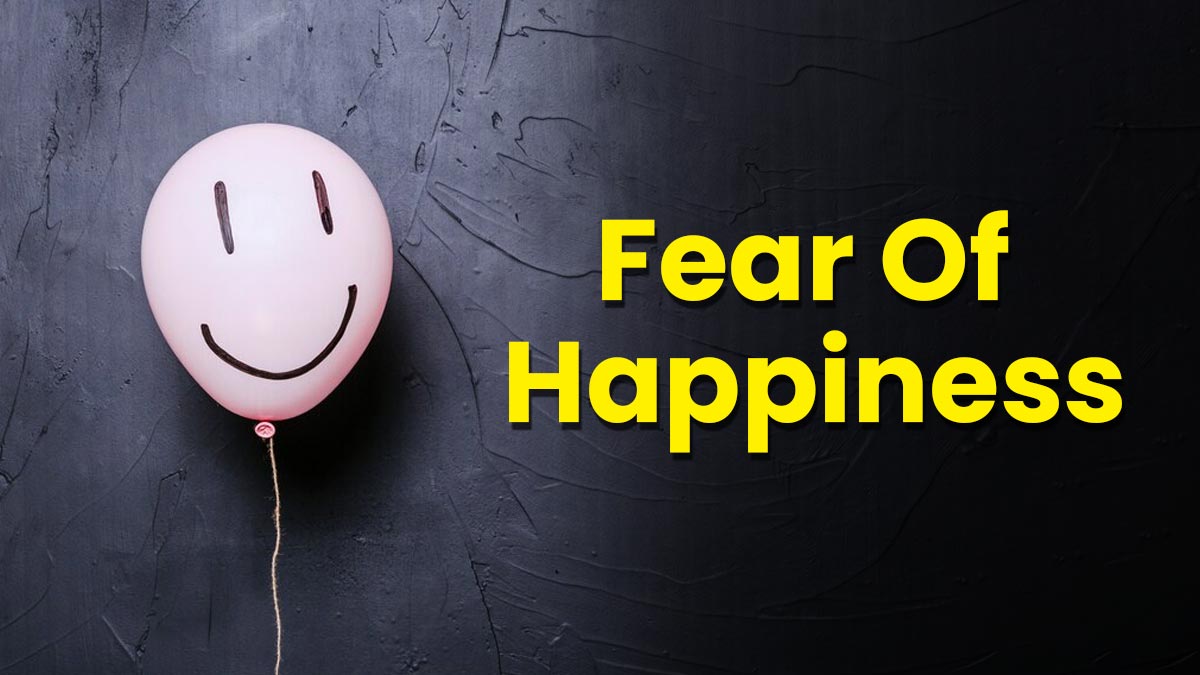
Have you ever come across people who feel anxious or uncomfortable at the thought of being happy? This fear, called cherophobia, leads them to avoid experiences that could make them happy. It can significantly affect daily activities, as those with cherophobia may struggle to engage in joyful experiences due to a deep-seated fear of happiness. We spoke to our expert Sumalatha Vasudeva Psychologist, Gleneagles BGS Hospital Kengeri, Bengaluru, who explained this condition, its causes, and how to overcome this dear of happiness.
Table of Content:-
CHECK YOUR
MENTAL HEALTH

What Is Cherophobia?

Cherophobia, derived from the Greek word 'chairo,' meaning 'to rejoice,' refers to a fear or aversion to happiness. "It is an intriguing psychological phenomenon characterised by an intense fear of happiness or joy. Individuals affected by this condition often experience significant discomfort or anxiety when faced with situations that are perceived as joyful or celebratory," said Vasudeva.
According to the Indian Journal of Psychiatry, the fear of happiness is linked to lower levels of subjective well-being and higher levels of depression. It is also connected to a general fear of experiencing negative emotions. For instance, those who fear and avoid feelings like sadness and anger are often more likely to fear happiness as well.
Also Read: Can You Train Your Brain For Happiness? Expert Sheds Light and How
Causes Of Cherophobia
Understanding cherophobia requires delving into its causes, which can be multifaceted, involving a mix of psychological, social, and cultural factors.
1. Past Traumatic Experiences

One of the primary causes of cherophobia can be past trauma. "People who have experienced significant emotional pain or loss during moments of happiness might develop a deep-seated fear of joy. This can be seen in cases where individuals associate happiness with subsequent negative outcomes," said Vasudeva. For example, if someone experiences a personal tragedy following a period of happiness, they might subconsciously believe that joy is a precursor to negative events, leading them to avoid it altogether.
2. Mental Health Conditions
Another significant factor is the presence of underlying mental health conditions, such as depression or anxiety disorders. People with depression may feel that they do not deserve happiness or are incapable of sustaining it, leading them to avoid joyful situations. Similarly, anxiety disorders can amplify fears and uncertainties about positive experiences, making the prospect of joy seem overwhelming or dangerous.
Also Read: Toxic Positivity: Signs You're Forcing Happiness
3. Cultural and Social Influences

Social and cultural influences also play a crucial role in the development of cherophobia. Societal norms and cultural beliefs can shape attitudes towards happiness. In some cultures, there is a prevailing belief that expressing or seeking happiness is selfish or inappropriate. "This can lead individuals to suppress their joy to conform to these norms. Additionally, cultural conditioning can instil a fear of being perceived as insincere or unrealistic when expressing happiness, contributing to the avoidance of joyful experiences," added Vasudeva.
4. Family Dynamics
Family dynamics and upbringing can also influence the development of cherophobia. Children raised in environments where emotional expression is discouraged or where there is a pattern of negative reinforcement associated with happiness might grow up to develop similar fears. If joy is met with criticism or dismissed in one's formative years, it can result in a lasting aversion to experiencing or expressing happiness.
Cognitive Distortions and Personal Beliefs

The role of personal beliefs and cognitive distortions is another important aspect to consider. Individuals with cherophobia might hold irrational beliefs about happiness, such as the idea that it is fleeting or inherently linked to negative consequences. Cognitive distortions, such as catastrophising (expecting the worst-case scenario) or black-and-white thinking (viewing situations as all good or all bad), can exacerbate these fears, making joy seem unattainable or dangerous.
Cherophobia as a Defense Mechanism
"Cherophobia can also manifest as a form of self-preservation. Some individuals may avoid joy as a defence mechanism to prevent the potential pain of losing it. By keeping happiness at arm's length, they attempt to shield themselves from the possibility of future disappointment or hurt," said Vasudeva.
Addressing Cherophobia
Addressing cherophobia typically involves therapeutic interventions aimed at reframing negative beliefs about happiness and confronting underlying fears. Cognitive-Behavioural Therapy (CBT) is one effective approach, helping individuals challenge distorted thinking patterns and gradually expose themselves to joyful experiences in a controlled and supportive manner.
Bottomline
Vasudeva concluded, “Cherophobia is a complex condition with roots in past trauma, mental health issues, cultural influences, and personal beliefs. Understanding and addressing its causes can help individuals reclaim their ability to experience and embrace happiness. Through therapy and self-reflection, those affected can work towards overcoming their fear and allowing joy to become a more integral part of their lives.”
[Disclaimer: This article contains information provided by an expert and is for informational purposes only. Hence, we advise you to consult your own professional if you are dealing with any health issues to avoid complications.]
Also watch this video
How we keep this article up to date:
We work with experts and keep a close eye on the latest in health and wellness. Whenever there is a new research or helpful information, we update our articles with accurate and useful advice.
Current Version